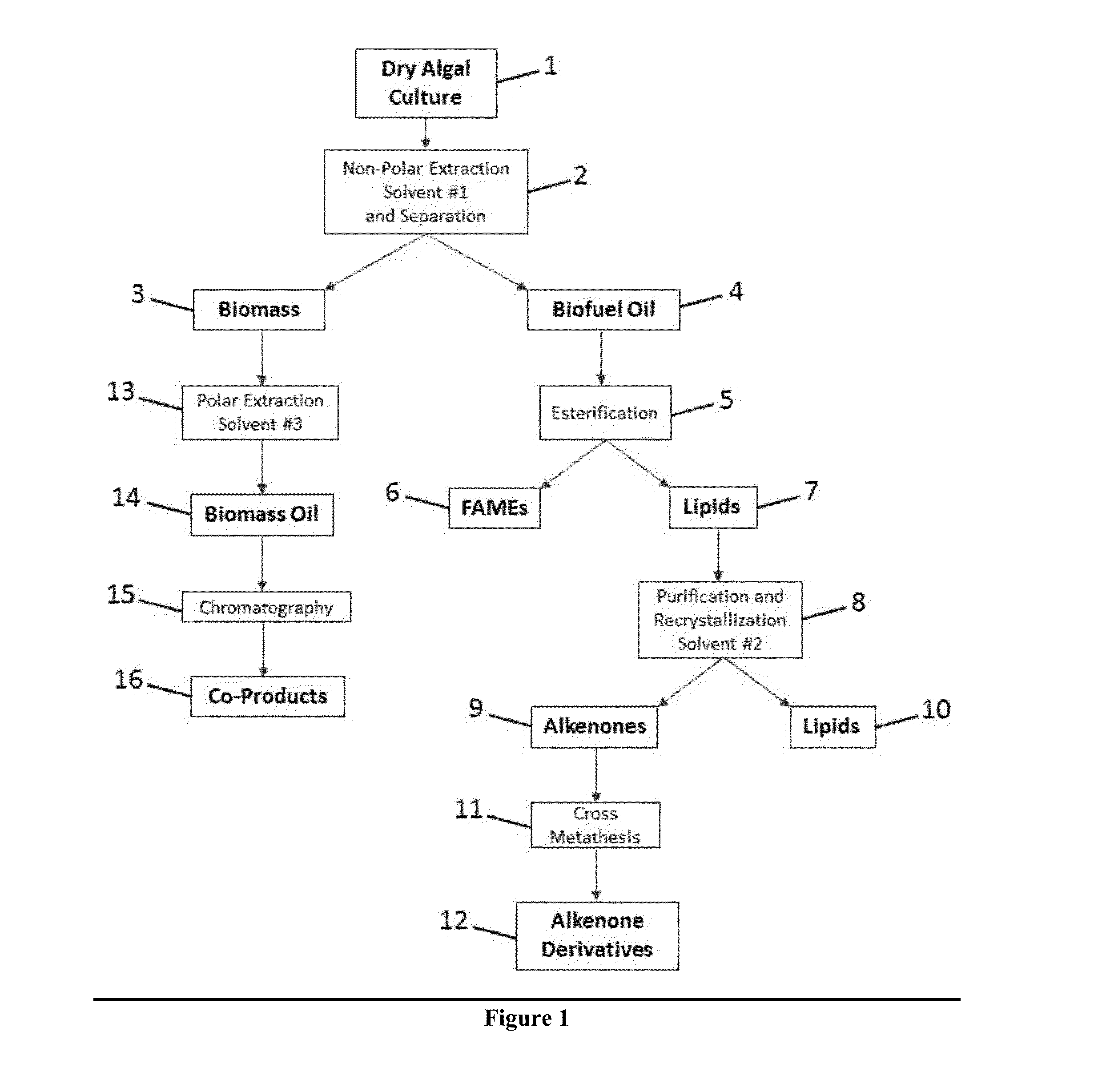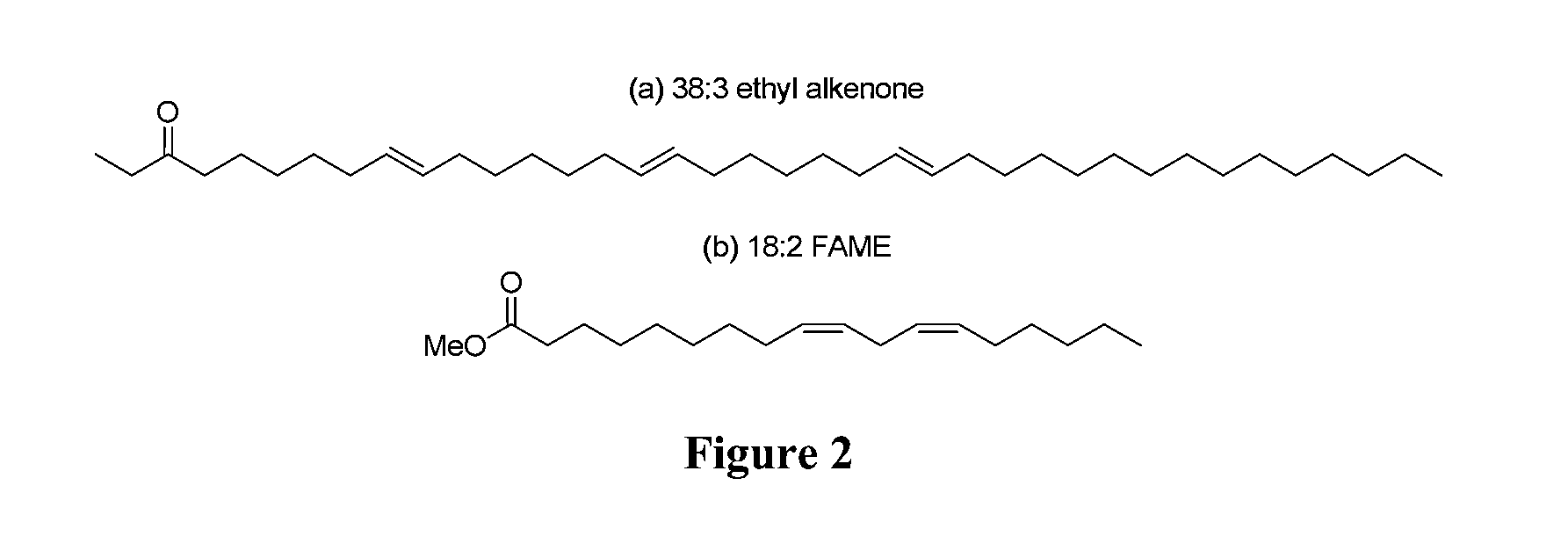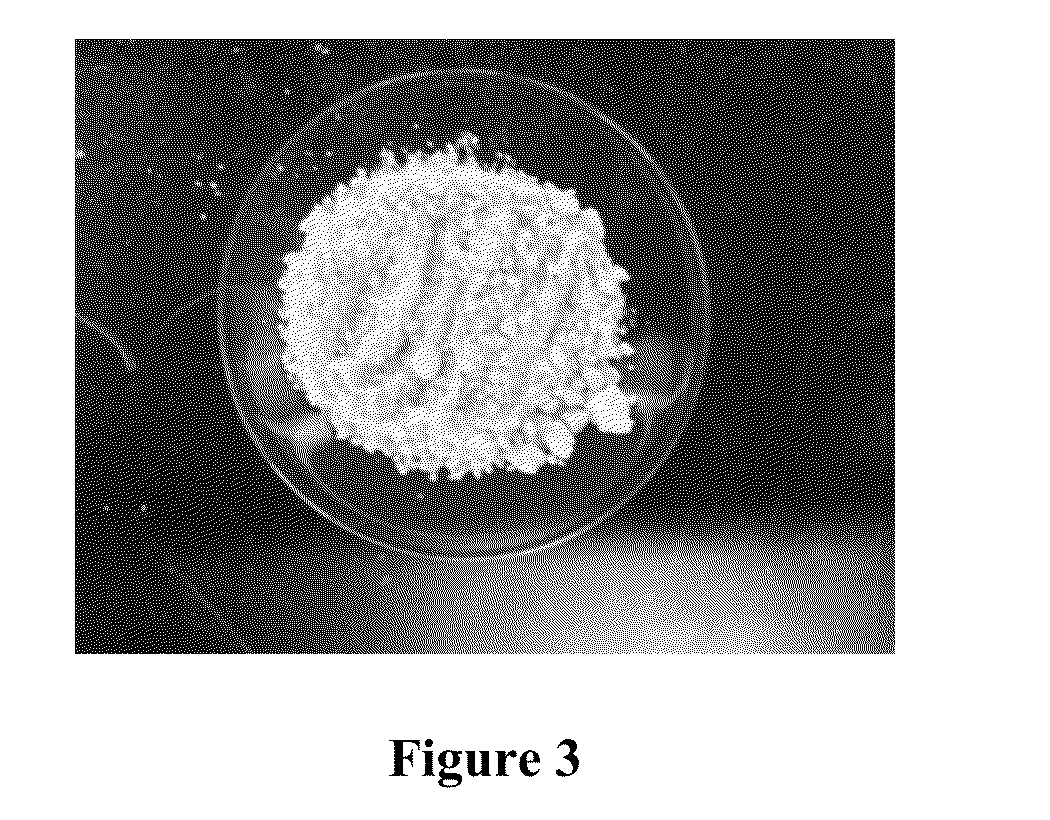Use of marine algae for co-producing alkenones, alkenone derivatives, and co-products
- Summary
- Abstract
- Description
- Claims
- Application Information
AI Technical Summary
Benefits of technology
Problems solved by technology
Method used
Image
Examples
example 1
[0114]The following example describes a specific embodiment of the inventive method to produce alkenones and alkenone derivatives, which is included to further illustrate certain aspects of the invention and are not intended to limit the invention.
Introduction
[0115]In preparation for a future 1-acre-sized bio-production site in Cape Cod, Mass., USA (41° 33 05″ N, −70° 36 55″ W), we surveyed local species capable of sustainable growth and high production of FAMEs in the low incidence of annual light availability and cool temperatures of the region. One of our targeted algae was the coastal marine prymnesiophyte Isochrysis sp. including strains T-Iso and C-Iso. We were interested in Isochrysis sp. as they are rich in polyunsaturated fatty acids (PUFAs), can be grown both indoors and outdoors (D. Kaplan et al., CRC Press, FL, 1986, pp. 147-198), have no cell walls, and are grown commercially for mariculture feedstocks (P. Lavens and P. Sorgeloos, Manual on the production and use of liv...
example 2
[0123]The following example describes a specific embodiment of the inventive method to simultaneously produce alkenones and alkenone derivatives in parallel with the production of fucoxanthin, which is included to further illustrate certain aspects of the invention and are not intended to limit the invention.
Introduction
[0124]The need for new energy supplies to meet a growing global demand and a desire for renewable, sustainable, and domestic feedstocks continues to drive much research aimed at investigating alternative energy sources. Recently, there has been a great resurgence of interest in algae as a potential biofuel feedstock; particularly for the production of liquid fuels such as biodiesel and other biomass-derived oils. Proposed benefits include the avoidance of certain fuel vs. food controversies and reportedly higher productivities when compared to traditional agricultural crops. Criticisms of algal biofuel programs tend to focus on projected costs of the overall process,...
example 3
[0173]This example demonstrates the co-purification, from a single batch of algae, of an alkenone-enriched sample in conjunction with an other commercially valuable second molecule (e.g. therapeutic molecule, neutraceutical, fuel, food-stuff, raw material, etc.).
[0174]The co-production of alkenones and alkenone derivatives from what in many instances is the waste-stream of a second commercially valuable product may significantly increase the commercial attractiveness of alkenone extraction because the cost of culture, growth, and preparation may be considered as being born by the production of the second product. Furthermore, in the production of biodiesel (e.g. FAMEs) and biofuels, a significant portion of algal biomass (often containing alkenones), is discarded as the waste-stream.
[0175]In this example, both FAMEs and a commercially valuable second molecule (e.g. fucoxanthin, astaxanthin, beta-carotene, and other carotenoids) are produced, and an alkenone-enriched fraction is obta...
PUM
| Property | Measurement | Unit |
|---|---|---|
| Fraction | aaaaa | aaaaa |
| Fraction | aaaaa | aaaaa |
| Fraction | aaaaa | aaaaa |
Abstract
Description
Claims
Application Information
 Login to View More
Login to View More - R&D
- Intellectual Property
- Life Sciences
- Materials
- Tech Scout
- Unparalleled Data Quality
- Higher Quality Content
- 60% Fewer Hallucinations
Browse by: Latest US Patents, China's latest patents, Technical Efficacy Thesaurus, Application Domain, Technology Topic, Popular Technical Reports.
© 2025 PatSnap. All rights reserved.Legal|Privacy policy|Modern Slavery Act Transparency Statement|Sitemap|About US| Contact US: help@patsnap.com



